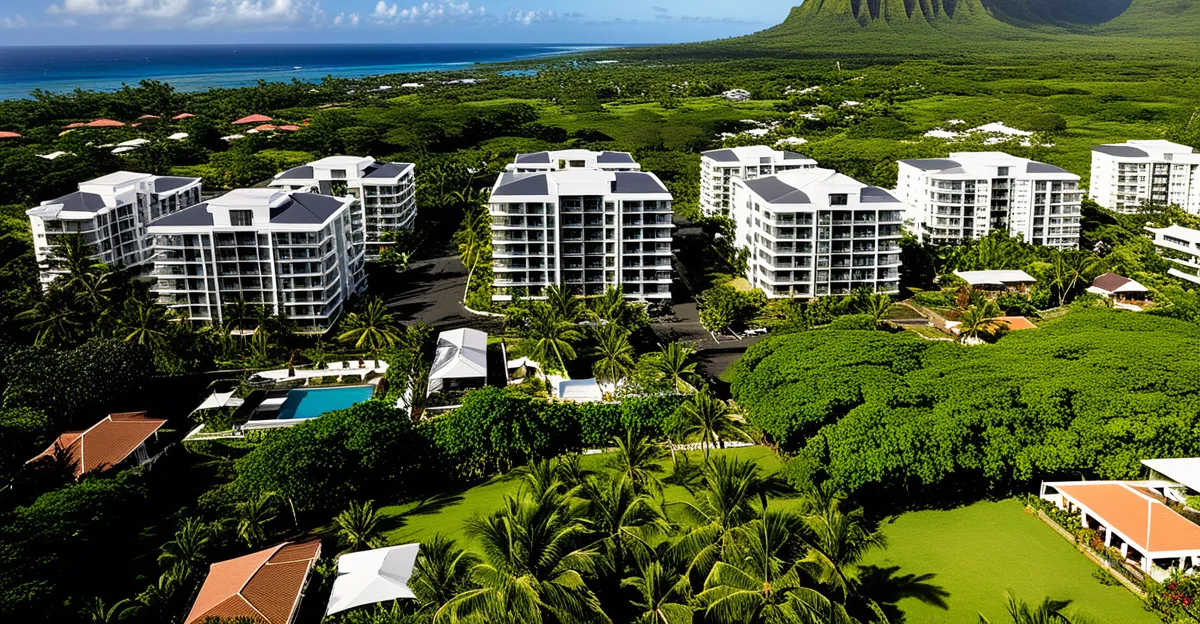Mauritius’s residential property market shows notable price variations across regions and property types, driven by rising demand and infrastructure developments. Investors find opportunities in both long-term and seasonal rentals, benefiting from attractive returns and government incentives. Understanding these dynamics and tapping into expert local support can enhance decision-making in this evolving market landscape.
Key Trends and Insights in the Mauritius Residential Property Market 2025
This page explains it in detail: https://www.barnes-mauritius.com/en/luxury-real-estate/mauritius. The Mauritian residential real estate market in 2025 continues to show robust growth, shaped by notable regional price variation and segmentation between luxury and affordable housing. Average house prices have surged, with five-bedroom homes now reaching up to MUR 74 million in exclusive regions, while central areas offer more accessible entry points near MUR 13 million. Apartments in downtown locations command significant premiums per square meter compared to those outside city centers—demonstrating a strong centrality effect on value.
Have you seen this : Discovering trends and opportunities in mauritius real estate
Distinct demand patterns emerge as international buyers, primarily from France, South Africa, and the UK, focus on the North and West, attracted by regulatory schemes like the PDS and IRS. These frameworks offer residency permits for foreign investment above USD 375,000, stimulating luxury project launches but also fueling broader market momentum. Affordable housing, meanwhile, sees growth through government initiatives such as the Social Housing Project, scheduled to deliver thousands of new units.
Investors benefit from diverse rental strategies, with long-term rentals providing security and seasonal lets yielding gross returns up to 7.5%. Infrastructure upgrades, such as major transport improvements, and the promotion of sustainable technologies, further bolster both property values and investor confidence across Mauritius.
Also read : Boost Your Toyota Celica”s Stopping Power: A Comprehensive Guide to Upgrading Front Brake Calipers
Regional Price Variations, Supply-Demand Dynamics, and Rental Market Evolution
Comparative market pricing by region and property type
Residential property prices in Mauritius show marked regional and property-type differences. The East commands the highest prices, driven by upscale developments. Houses there average over MUR 74 million, and apartments approach MUR 30 million. In contrast, the Central region remains the most affordable, with houses averaging around MUR 13 million. Other areas like the North and West reflect mid-range pricing, influenced by amenities, infrastructure, and proximity to resort hubs. Apartments in downtown centers are priced significantly higher per square meter than those outside city centers, highlighting the premium on location.
Shifts in housing demand, supply, and occupancy rates
Demand for residential property remains robust, fueled by foreign buyer schemes and infrastructure upgrades. The North (Rivière du Rempart, Pamplemousses) and West (Black River) consistently attract the highest interest, especially among French, South African, and British buyers. Despite a 14% increase in total housing stock since 2011, occupancy rates declined from 92% to 86%, with a notable rise in vacant units. Meanwhile, the average size of development projects has increased, but the number of new dwellings permitted has fallen, pointing to a market prioritizing larger-scale, premium projects.
Rental yield benchmarks and trends
Rental markets distinguish themselves through two main strategies: stable long-term leases and higher-yielding short-term rentals. Gross rental yields on villas in sought-after regions can reach 7% for long-term and up to 7.5% for seasonal rentals, though short-term lets involve fluctuating occupancy and added costs. Demand for short-term rentals is highest in the North, West, and East, particularly near tourism zones—showing strong links between tourism patterns and rental investment opportunities.
Investment Strategies, Regulatory Landscape, and Future Outlook
Strategic investment opportunities: entry points, popular investment schemes, and market entry tips for local and overseas buyers
Mauritius offers compelling property investment opportunities through both long-term and seasonal rental strategies. In 2025, gross rental yields for four-bedroom villas can approach 7%, with higher yields, up to 7.5%, possible in seasonal rentals. Entry points for foreigners are typically through government-approved schemes—PDS, IRS, RES, and Smart City Scheme—which also offer eligibility for residence permits with investments above USD 375,000. The most attractive markets for investment are in the North and West, where demand from French, South African, and British buyers is highest.
Legal and regulatory landscape: property ownership rules for foreigners, home loan schemes, and affordable housing initiatives
Foreign buyers are limited to designated property schemes, while Mauritians can purchase without restriction. Properties for foreigners now average MUR 3x,573,772, marking a 15.4% price rise. Home loans are accessible, with interest rates ranging from 2.5% to 13.75%, and government incentives such as a 5% refund under the Home Loan Payment Scheme. The state is also advancing social housing initiatives, targeting an additional 12,000 affordable units.
Expert forecasts and market implications through 2025 and beyond
The market outlook through 2025 remains positive amid robust economic growth and strong rental demand. Risks include inflation volatility, construction cost swings, increasing vacancy rates (now 13.9%), and a tightening labor market. Experts recommend thorough due diligence, focusing on high-demand coastal zones, and leveraging local expertise for safe, compliant transactions.











